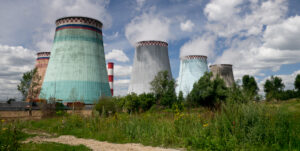Cost of industrial air pollution in Europe equal to 2% of the EU’s GDP
The European Environment Agency (EEA) have presented their latest assessment of the cost of air pollution from industry across the EU, bringing it up to date for the decade 2012-2021.
In simple terms the methodology considers the following:
- Emissions to air reported by industry to the European Industrial Emissions Portal
- Dispersion/atmospheric chemistry modelling: showing where pollution would likely end up after emission.
- Exposure assessment: To what extent are the population and the environment are exposed to the different pollutants.
- Impact assessment: How is this pollution is likely to affect the population (mortality and morbidity) and the environment
- Economic valuation of impacts: Calculation of the monetary value of those impacts based on peer-reviewed literature and established economic methods.
The EEA found that during the last ten years of available data, industrial air emissions had an estimated total cost of between €2.7 trillion and €4.3 trillion, an average of between €268 billion and €428 billion per year.
The variance in estimates reflects the difference between the calculations being based on the value of a life year (VOLY) method or the value of statistical life (VSL) method. The latter method producing the higher estimate.
The category of emission described as the main air pollutants (NOx, PM10, Sulfur dioxide and ammonia) had the most impact, responsible for between 27% and 55% of the cost. Greenhouse gas emissions have the next greatest impact, while heavy metals and organic pollutants are responsible for less than 5%.
It was also found that just 107 (1.1%) of the 9,400 facilities for which data exists, were responsible for 50% of the total cost.
Furthermore, 24 of the 50 most polluting facilities in 2021 were thermal power stations, with nine of them located in Germany (nine) and six in Poland. Twenty-two of these 24 plants burn lignite or hard coal as their main fuel.
The briefing concludes: ‘These external costs have decreased consistently (-33%) over the decade. This suggests that policies to mitigate and control pollution and other factors, such as the use of less carbon-intensive fuels, have had a positive impact leading to decreased environmental damage and associated societal costs. However, significant costs persist, indicating the need for continued action to further reduce pollution levels and associated impacts. In 2021, the external costs of industrial air pollution from the large industrial operators included in this study were equivalent to approximately 2% of the EU’s GDP’


















